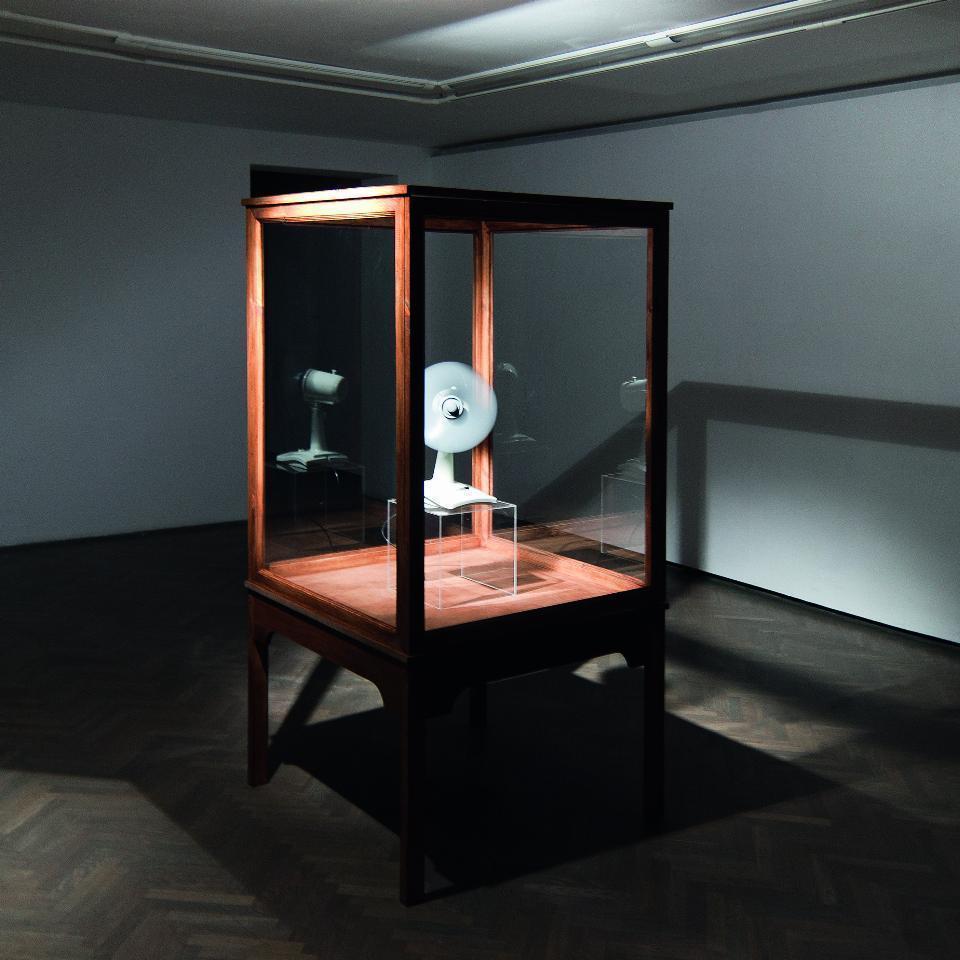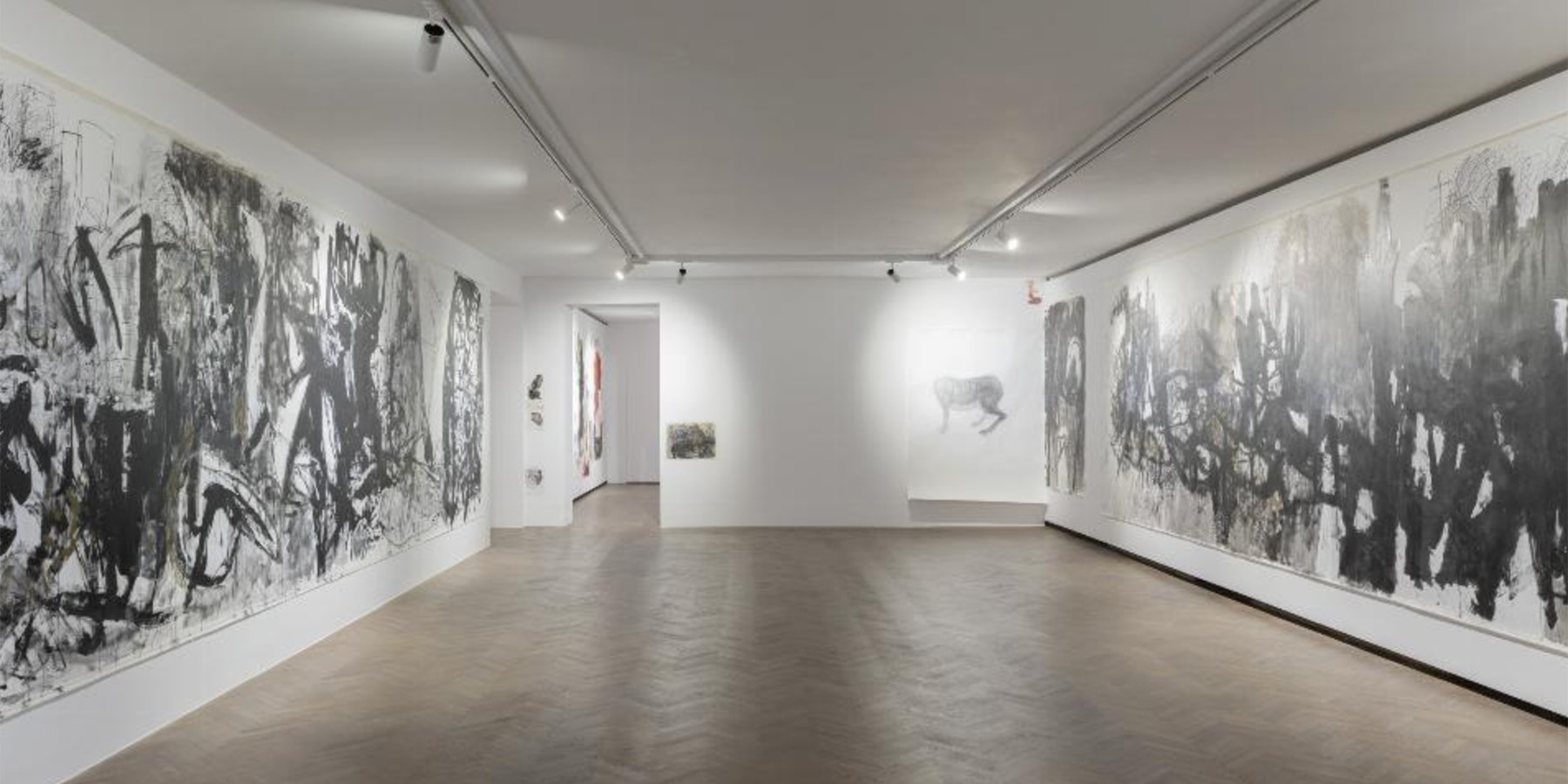Slaven Tolj
Bubo-Bubo Maximus
Slaven Tolj
Bubo-Bubo Maximus, 1994, installation, 198 × 98 × 98 cm
Collection II of the Arsenal Gallery in Białystok. Work purchased by the Arsenal Gallery

In addition to spectacular performance pieces steeped in the realities of the Balkans, Croatia’s Slaven Tolj favours working with objects. His reworking of the traditions of ready-made objects conveys a strong social thread in his work. Many of the artist’s pieces based on the interpretation of an object become understandable only in the political, religious or social context associated with the place of their origin. The majority of his activities and most of the objects used in his installations are connected with the artist’s home city of Dubrovnik.
Locational context is likewise relevant in the case of Bubo-Bubo Maximus. The work shares its title with two of Tolj’s solo exhibitions in Dubrovnik (1994) and Zagreb (1995); Bubo bubo being the Latin name for the Eurasian eagle owl, the largest owl species in the world. The Dubrovnik exhibition featured a stuffed owl perched above one of the rooms like the owl watching over the city’s main street of Stradun during the holidays. In another room, on a platform of boards used to secure relics during renovations or wars (their use here serves as a reference to the city’s siege by Yugoslavian army in the years 1991–1992), Tolj placed ten sets of photos of parents and their children. The physical resemblances are a metaphor for how young generations tend to repeat the societal functions of their parents, live with them for long periods under the same roof and take over the family business. The installation is further informed by a working fan closed inside a glass case. The object is deprived of any sense, its spinning blades having no impact on the humid atmosphere created by the artist. The only factor is an open window looking out over the Adriatic Sea and Lokrum island.
In the context of Dubrovnik, the fan enclosed in a glass case can point to the city’s isolation, both geographical (Dubrovnik is connected to mainland Croatia by an isthmus) and political, in the early 1990’s. Also of significance to the city’s condition is the provincial bourgeois culture which determined the fate of entire generations raised in the patriarchal tradition. In a more universal sense, the enclosed fan can be read as a symbol of captivity.
Izabela Kopania
Text published in the book by Izabela Kopania „Open Set. Works from Kolekcja II of Galeria Arsenał in Białystok and Podlaskie Towarzystwo Zachęty Sztuk Pięknych”, Białystok 2012

PLAN YOUR VISIT
Opening times:
Thuesday – Sunday
10:00-18:00
Last admission
to exhibition is at:
17.30